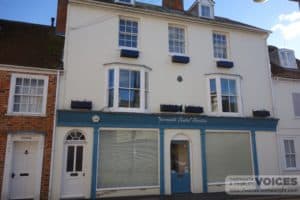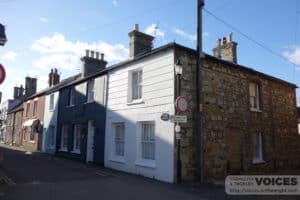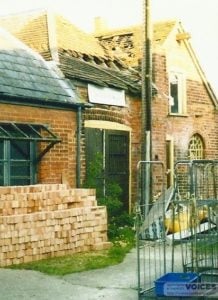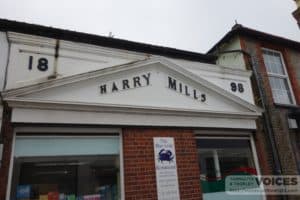To get from the ferry to the station, people had to walk through the town, but there were porters to push their luggage from the Pier to the station. It’s not very far really. (A) It is on a wet day!(P.) Annette Haynes and Pat Burt b 1929
It used to cost 6d to catch the train to Freshwater to go to the Pictures at The Palace, then we’d walk back afterwards. Blanche Kennard nee Dore,b 1923 stationed at The Pier Hotel ( now The George) as a WRN in WWII from 1942.
The station master used to live in the house next door here. I can remember a Mr Dennett, because his daughter was very friendly with my sister Kate. They used to get about a bit together. Of course he never used to do a lot down here at the station, he was always down the pier. Phil Kelsey b 1920
A porter from the Pier met the trains and collected luggage on a hand truck which he pushed to and from the Pier. Mr. Orchard had a big old fashioned car – open at the front where the chauffeur sat – and he used to meet the trains to drive people round to the ferry. Eileen Smith nee Lansdowne b1921





